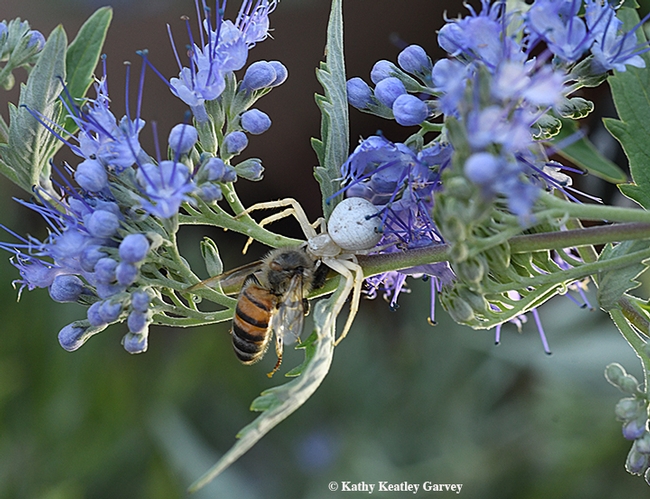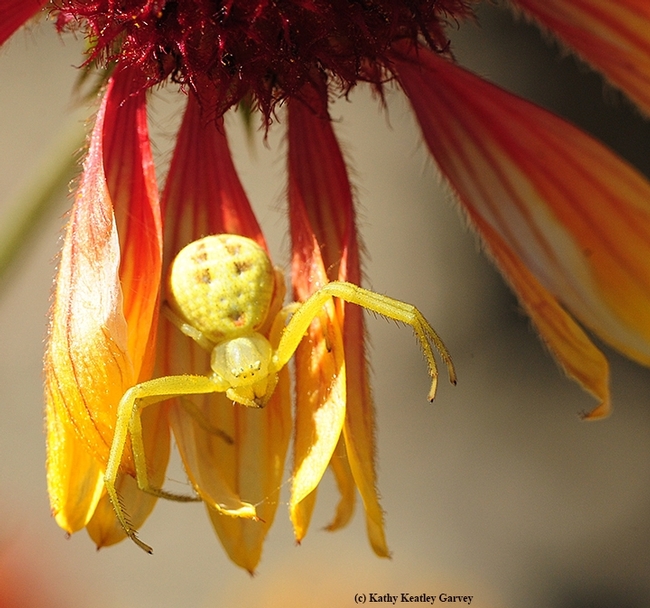It was a good day for a crab spider.
It was NOT a good day for a honey bee.
It's early evening and here's this bee foraging on a bluebeard plant, Caryopteris x clandonensis, totally unaware of the ambush predator lying in wait.
The predator and the prey: Misumena vatia and Apis mellifera.
The hunter and the hunted.
A venomous bite and it's all over.
These spiders, often called the "white death spider," are camouflage artists. They can turn colors, from yellow to white, or white to yellow. You'll often see yellow crab spiders on golden rod Solidago or a predominantly yellow plant, like blanketflower, Gallardia.
"These spiders change color by secreting a liquid yellow pigment into the outer cell layer of the body," according to Wikipedia. "On a white base, this pigment is transported into lower layers, so that inner glands, filled with white guanine, become visible. The color similarity between the spider and the flower is well matched with a white flower, in particular the Chaerophyllum temulum, compared to a yellow flower based on the spectral reflectance functions."
"If the spider dwells longer on a white plant, the yellow pigment is often excreted," Wikipedia says. "It will then take the spider much longer to change to yellow, because it will have to produce the yellow pigment first. The color change is induced by visual feedback; spiders with painted eyes were found to have lost this ability. The color change from white to yellow takes between 10 and 25 days, the reverse about six days. The yellow pigments have been identified as kynurenine and 3-hydroxykynurenine."
Who knew?
One thing's for sure: everybody eats in the pollinator garden.
Attached Images:

